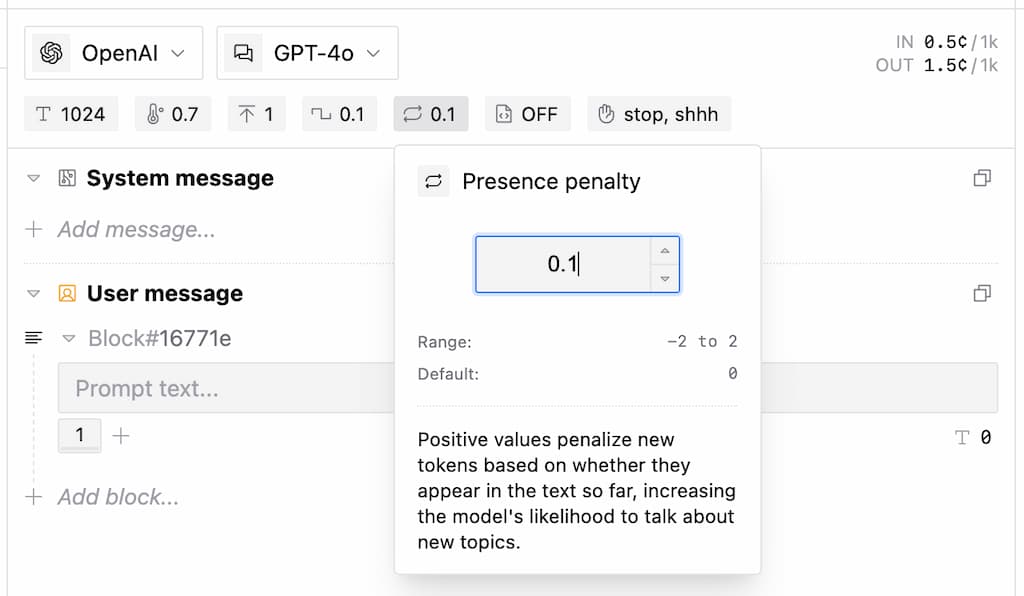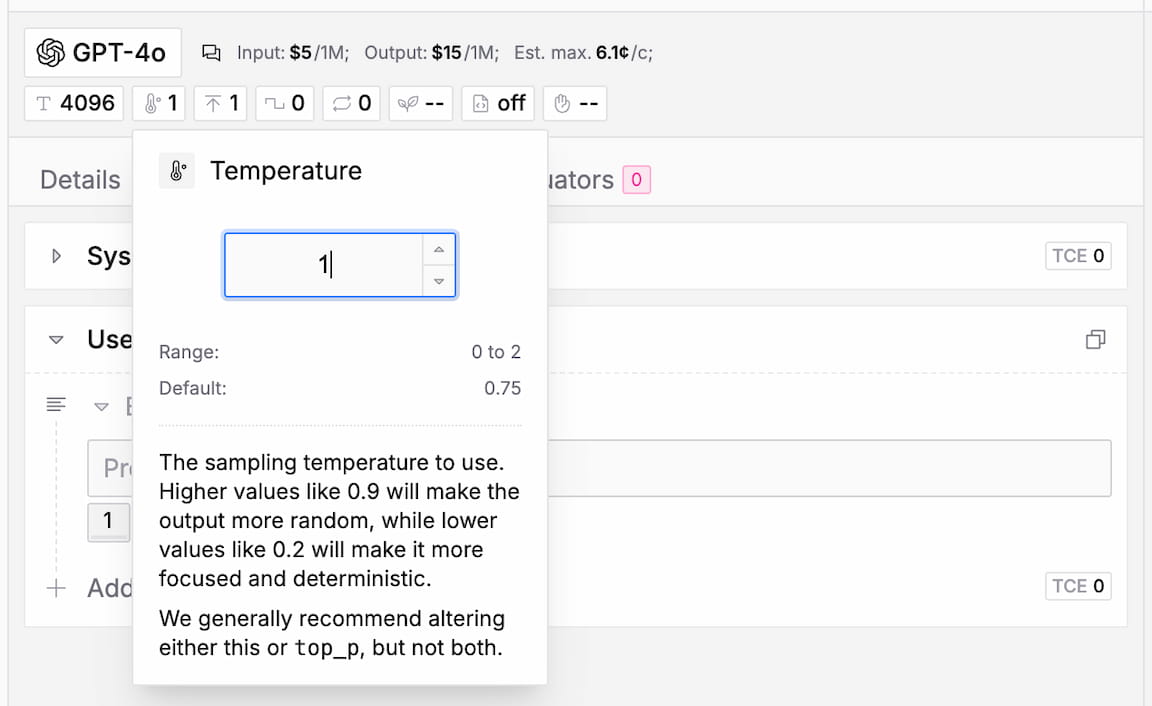Appearance
Models (LLMs)
You can select and configure a suitable LLM for each Prompt independently. Just click on the model name at the top of the Prompt detail page to open the model selection dialog and choose from a wide variety of providers and models.
To see the full list of supported models, take a look at the LLM Index.

Related resources
Token price
The inference price for input and output tokens is set by each provider and displayed to the right of the model selection in units of cents per 1,000 tokens. There is no markup, inference costs will be the same as if you would use the provider's API directly.
The total completion price is always calculated as
Model settings
Below the model selection you can tune the model settings. To edit a parameter, just click on it to open its details. The popover lets you adjust the value of the parameter and gives you useful information about the min/max range, the default value, and an explanation of what the parameter does.
If a specific model does not support a setting it will be grayed out and omitted when submitting the prompt to the API.

Token limit
The maximum number of tokens the model should process/generate in the completion. Unfortunately, different providers treat the token limit differently. Sometimes the token limit refers to input plus output tokens, e.g. OpenAI, and sometimes it refers only to the output tokens, e.g. Anthropic.
The model can never exceed the token limit. So if you experience completion cutoffs, the token limit is most likely the culprit.
Temperature
The sampling temperature to use. Higher values like 0.9 will make the output more random, while lower values like 0.2 will make it more focused and deterministic.
Top p
An alternative to sampling with temperature, called nucleus sampling, where the model considers the results of the tokens with top_p probability mass. So 0.1 means only the tokens comprising the top 10% probability mass are considered.
It is generally recommended to either alter the temperature or the top p parameter, but not both at the same time.
Frequency penalty
Positive values penalize new tokens based on their existing frequency in the text so far, decreasing the model's likelihood to repeat the same line verbatim.
Presence penalty
Positive values penalize new tokens based on whether they appear in the text so far, increasing the model's likelihood to talk about new topics.
Seed
If specified, the model will make a best effort to sample deterministically, such that repeated requests with the same seed and parameters should return the same result. However, determinism is not guaranteed!
JSON mode
If set to true, the model is forced to output JSON-formatted responses. Note that your prompt has to contain the word "json", otherwise the API will throw an error.
Reasoning mode
Some of the recent models are capable of reasoning (or "thinking"). They use hidden tokens to analyze a task or question before generating a final answer. Depending on the provider, reasoning models will either reason automatically for all prompts (e.g. OpenAI o3 pro) or only if explicitly requested (e.g. Anthropic Claude 4 Sonnet).
If a model is capable of reasoning and if reasoning is optional, you'll see a toggle in the model settings to enable/disable the feature. When enabled, you can also set the maximum number of tokens that should be spent on reasoning.
Stop sequences
A comma-separated list of up to 4 sequences where the API will stop generating further tokens. The returned text will not contain the stop sequence.